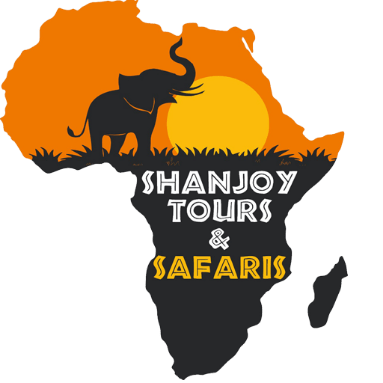The Tsavo Wilderness
Situated in Taita-Taveta County, Tsavo National Park, the largest national park in Kenya, is also one of the world’s oldest and largest animal conservancies. The parks consist of Tsavo East and Tsavo West. Both parks feature scenic open grasslands, Acacia woodlands, rocky ridges, scrublands, belts of riverine vegetation, and thousands of wildlife, making for one of the most rewarding wild safari experiences.
Tsavo East National Park
Tsavo East National Park, located southeast of Voi in the Taita-Taveta District, covers 13,747 km² of the former Tatu Deserts. It is the oldest and most prominent part of the Tsavo Conservancy. It became famous in the early 1890s as home to the man-eating lions that preyed on Mombasa-Kampala railway workers. The Tsavo plains were also the setting of the First World War colonial supremacy of East Africa between Britain and Germany. Yet, despite its dark beginnings, this park offers one of the most evocative wildlife tour experiences in Kenya.
Most of the area consists of open savanna and grasslands, upon which the palmed Galana River flows. Tsavo East’s popularity can be attributed to its extensive wildlife collection, which includes Elephants, Lions, Leopards, Black Rhinos, Cape Buffalos (Africa’s Big Five), Velvet Monkeys, and Waterbuck, among others. The park is also home to several bird species, including African Lovebirds, Grey Crowned Cranes, Black Kites, and African Sacred Ibises.
The Tsavo East National Park also borders the Chyulu Hills National Park and Mkomazi Game Reserve in Tanzania. This makes it easier for tourists to enjoy a Kenya/Tanzania Safari package.
Special Highlights
-
The Yatta Plateau
A 300 Km Lava flow formed from the volcanic explosion of Ol-Doinyo Sabuk Mountain. Known to be the longest lava flow in the world, the Plateau runs along the western boundary of the park, above River Athi.
-
The Mudanda Rock climbing potential
This is a 1.6 km inselberg of rock that has a dam below it. Provide a crucial water catchment area for wildlife during the dry season.
-
The Lugard Falls
The Lugard Rapids, named after Sir Frederick Lugard, a British soldier and African explorer, are a series of water rapids formed in the Galana River.
-
Aruba Dam
This is a man-made reservoir built-in 1952 across River Voi. It attracts thousands of animals and water birds every year.
Tsavo West National Park
Tsavo West National Park, covering 9,065 km², is more mountainous and includes Mzima Springs, a natural reservoir formed by rainwater flowing through volcanic rock, and Lake Jipe. Tsavo West is popular for its magnificent scenery, vast wildlife, rock climbing, and good in-park road systems. It also has an archaeological history of early human settlement in the Tsavo rock shelters. Some of these shelters, dating back to 700 AD, are still present at the conservancy.
The park also provides an excellent rock climbing experience, with elephants roaming the cliffs below and falcons, eagles, and vultures flying around the crags. Most impressive is Kichwa Tembo, a 300-meter rock that inspired the ascent of the Great Tsavo chimney. The Ivory Tower on the Elephant Rocks route is Kenya’s hardest but most exciting bush rock climb. Another notable feature is the Chaimu Volcanic Crater, a tall raising hill covered in black lava stones also known as the Devil’s Crater.
Tsavo West further boasts a wide variety of wildlife species including Masai Giraffe, Eastern Black Rhinoceros, Cape buffalo, Hippopotamus, and the three major African Cats (Lion, Leopard, and Cheetah). Adjacent to Tsavo West National Park is the Taita Hills Wildlife Sanctuary, a privately owned sanctuary known for its diverse wildlife and significant contribution to the local tourism economy. With such richness, be assured that game drives during your Tsavo National Park safari will offer exceptional experiences.
To share the Joys of Travel, we offer customized Safari deals guided by your desired experience. Shanjoy has invested in luxury tour cruisers and experienced guides to deliver a wild Safari adventure you will forever cherish.
Special Highlights
-
Mzima Springs
This is a spectacle of pools and springs that host large crocodile and hippo populations. The Tsavo River is a significant geographical feature that traverses the park and supports its diverse ecosystem.
-
Shetani Lava Flow
Meaning “Devil” in Swahili, this is an 8-kilometre-long and 1.6-kilometre-wide lava flow that occurred when a volcano erupted from the earth 500 years ago.
-
Chaimu Volcanic Crater and Lava Field
The rising hill, known as “the devil’s crater,” is covered in black lava stones and grassy shrubs.
-
Five Sisters hills
these are five identical cone-shaped volcanic hills. They create a stunning photographic landscape with black lava outcrops and grassy fields.
Fact Files
Key Attractions: Game viewing, bird watching, camping, and trekking within the Tsavo National Parks.
Wildlife includes lions, leopards, rhinos, dust-red elephants, buffalo, hippos, lesser kudus, waterbucks, hirolas, and gerenuk. The Lumo Community Wildlife Conservancy serves as a transit corridor for wildlife between the Tsavo Conservation Area and Tanzania’s Mkomazi Game Reserve.
Birds: Over 500 recorded species of birds, both local and migratory.
Park Accessibility: The Park can be accessed via road or air
Road: The park is accessible from Nairobi via the Mtito Andei Gates, located 233 kilometers south of the city on the Nairobi-Mombasa superhighway. From Malindi, use Sala gate, along Western Road.
Airstrips: Enjoy a flying package with convenient landing at Sala, Voi, Sangayaya, Cottars, Aruba, Ithumba, Mopeo and Bachuma airstrips.





